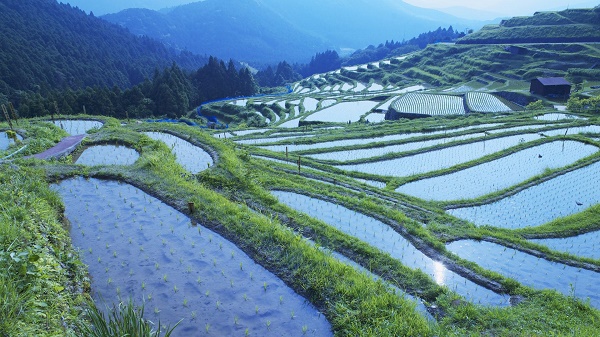
Japan Celebrates Shinto Holiday Niiname Sai – “Celebrations of the First Taste”
- By Kelly Frazier --
- 23 Nov 2015 --

Japanese thanksgiving, Niiname Sai, gives thanks to the Kami who provides the elements of nature that provide the fall harvest.
In Japanese culture, Shinto’s Niiname Sai is a very important rite that was celebrated annually as a form of a thanksgiving ceremony by the emperor to the Kami of Heaven and Earth for the provision of newly bumper harvested rice during the autumn season of harvest. Over the past few years, the Niiname Sai celebration that is held on November 23rd every year was declared a new national holiday and rebranded to be Labor Thanksgiving Day.
Japan Celebrates Shinto Holiday Niiname Sai – “Celebrations of the First Taste”[/tweetthis]
The Niiname Sai ceremony is usually crowned by the celebration of Ki matsuri (autumn festival) where Buddhists assemble at various shrines to offer their thanksgiving to Kami for the bumper rice harvest. The ceremony is used as a symbol of Japanese gratitude for everything they receive from nature. Lemniscate (a knot connecting the present and the universe) is often used to represent the interaction between humanity and nature.
November 23, 2015
新嘗祭
Niiname-sai (First fruit festival)
Today is one of the Japanese traditional holiday so… https://t.co/R1J1k9QyPW
— 堀田尚宏 (Naohiro Hotta) (@naohiro_hotta) November 23, 2015
Today, Niiname Sai has been given the contemporary name Labour Thanksgiving Day to commemorate the labor and production, as well as giving thanks to one another. The occasion was established in 1948 after the end of World War II as a day to commemorate the major postwar amendments done to the Japanese constitution. The major changes included the increased workers rights and provision of fundamental human rights.
The royal family of Japan still celebrates the Niiname-Sai up to date in a secluded function while the rest of Japanese gather to celebrate the new national holiday the Labor Thanksgiving Day.


















